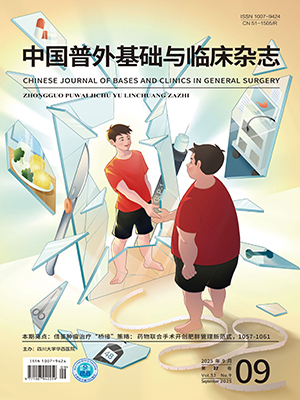Objective To compare the therapeutic effect of percutaneous transhepatic cholangial drainage (PTCD) and operation drainage for the patients with inoperable malignant obstructive jaundice.
Methods A total of 131 patients with inoperable malignant obstructive jaundice were treated in this hospital, in which 102 patients had PTCD by placement of metallic stent and (or) plastic tubes to remove obstruction of bile duct (interventional treatment group). Simultaneously 29 patients were selected for operation by intraexternal drainage (operation drainage group). The patients were followed up for comparison of the serum level of total bilirubin, postoperative complications, average length of hospitalization and average cost between the two groups.
Results PTCD was successfully performed in all the patients of the interventional treatment group. There were no significant differences of 50% decrease period of average total bilirubin level or postoperative complications between the two groups (P gt;0.05). The average length of hospitalization and average cost of interventional treatment group were less than those of operation drainage group (P lt;0.05).
Conclusions Compare with operation drainage, interventional treatment can reduce average length of hospitalization and average cost, without increase of postoperative complications, which is a main chance of treatment for malignant obstructive jaundice.
Citation: XIN Bo,ZHANG Linbo,JIANG Xiyuan,CAO Shu.. Comparison Between Interventional Treatment and Operation Drainage for Malignant Obstructive Jaundice. CHINESE JOURNAL OF BASES AND CLINICS IN GENERAL SURGERY, 2010, 17(3): 233-236. doi: Copy
Copyright © the editorial department of CHINESE JOURNAL OF BASES AND CLINICS IN GENERAL SURGERY of West China Medical Publisher. All rights reserved




